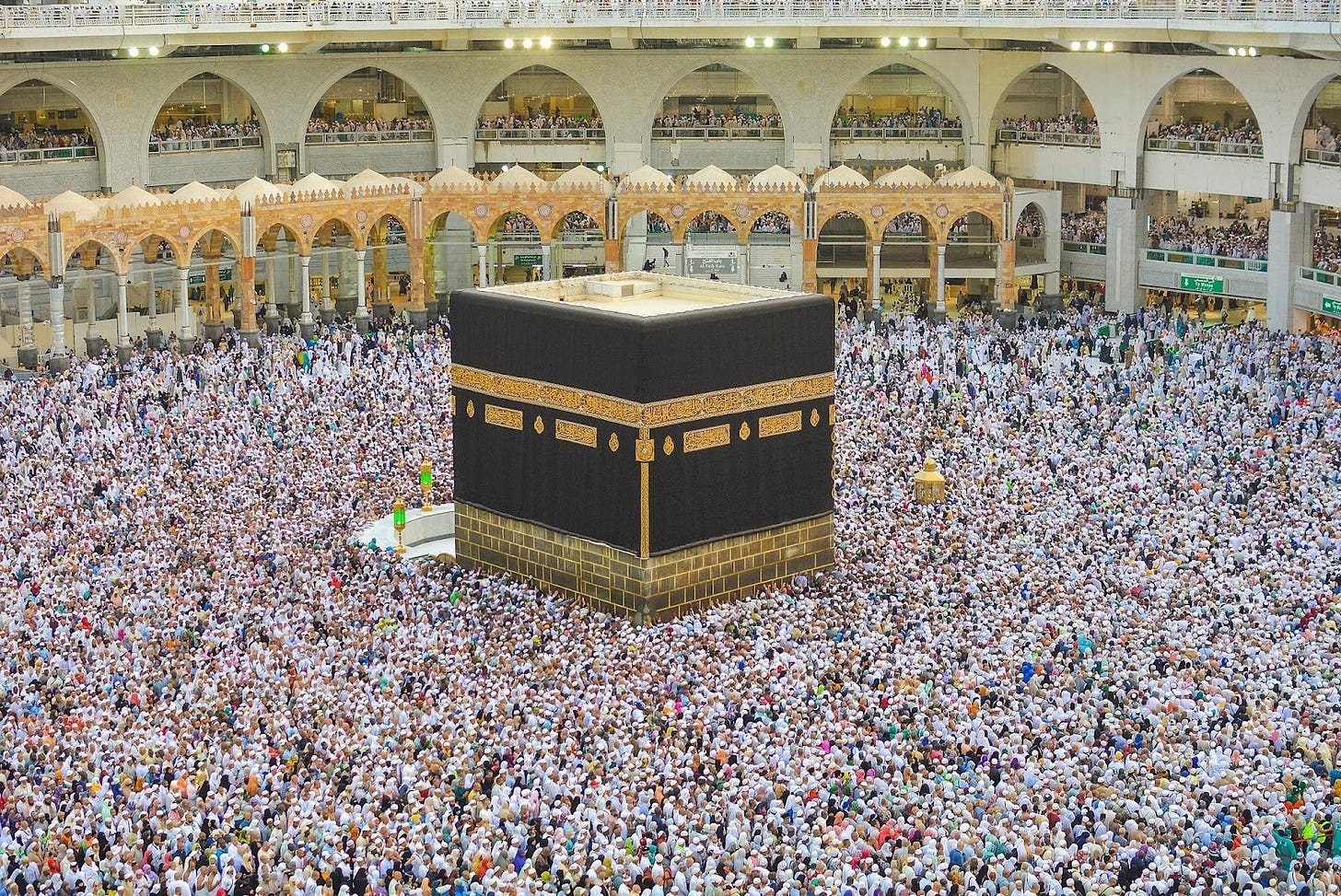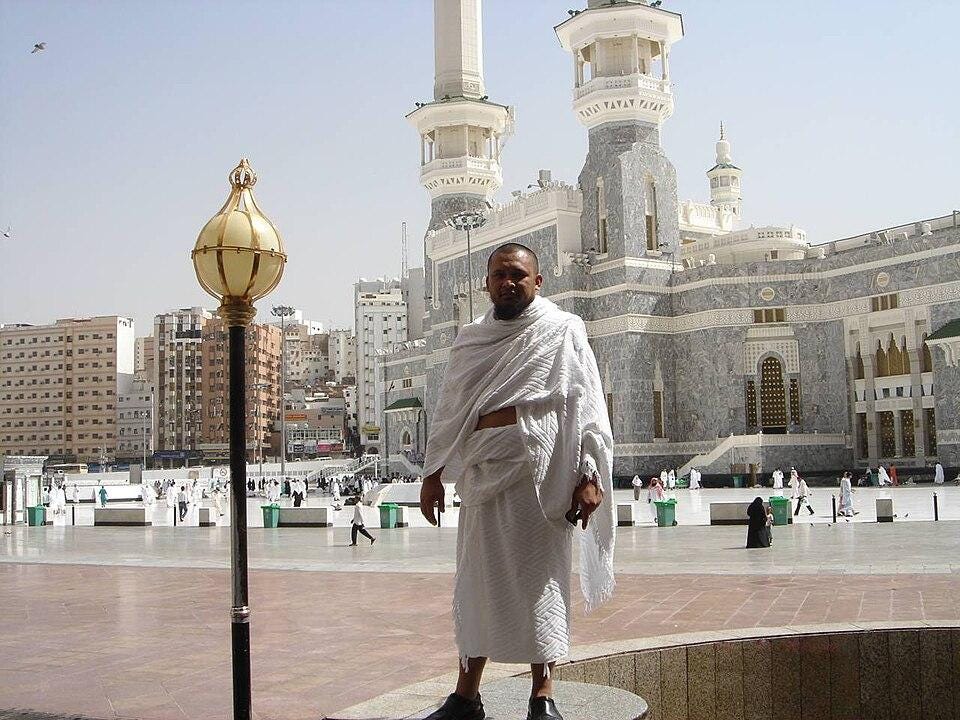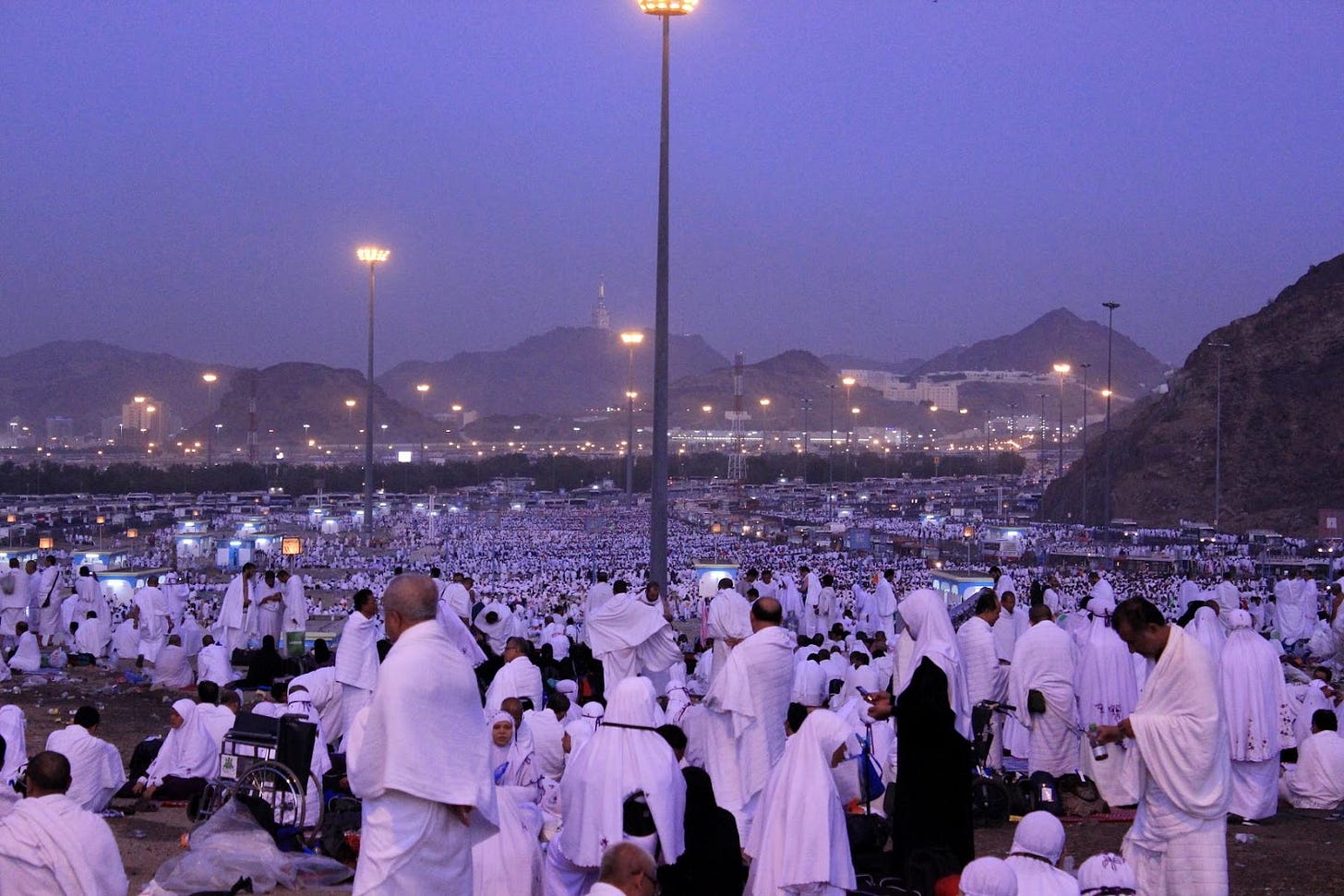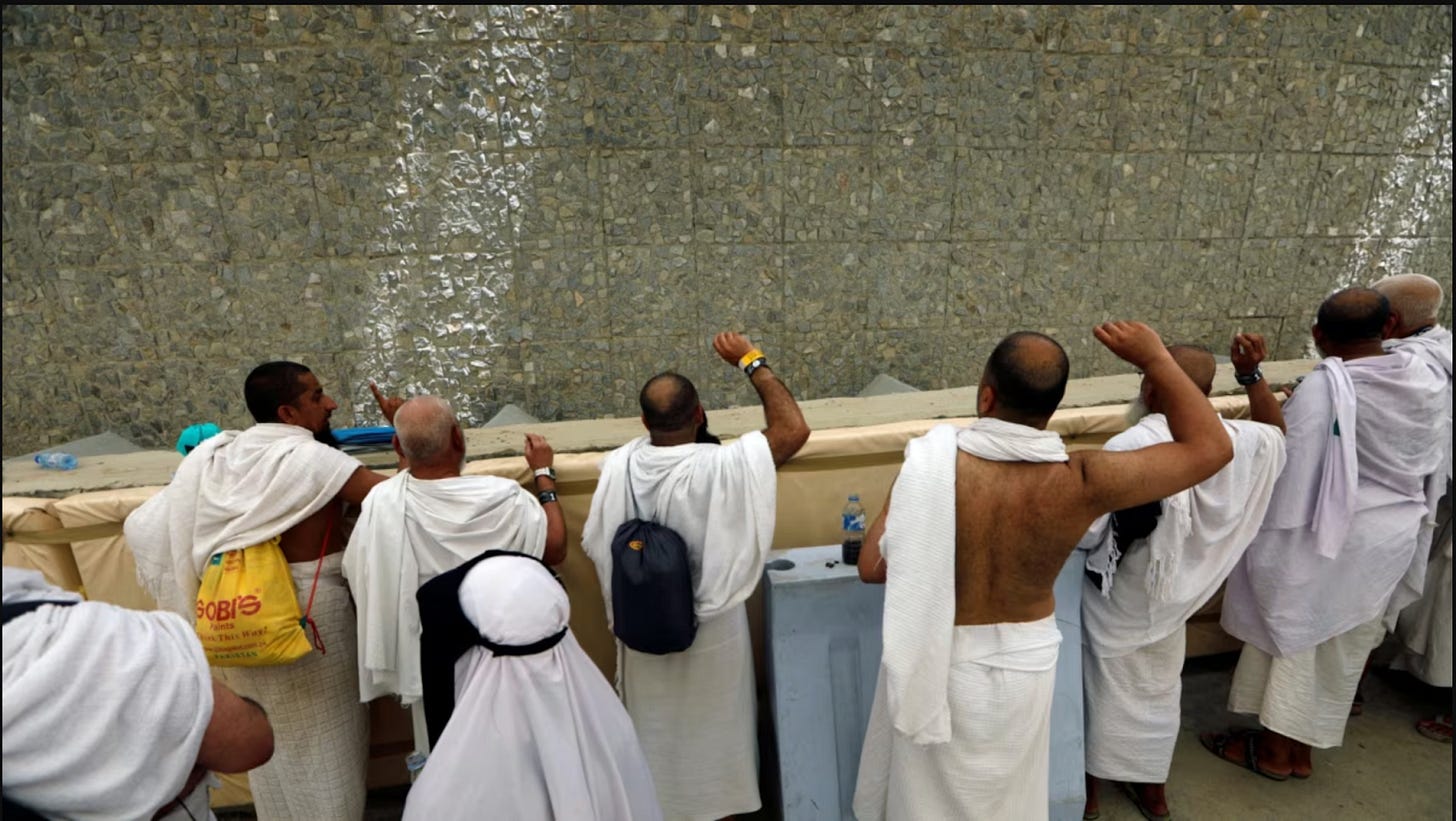
What is Hajj?

Hajj is one of the five pillars of Islam and refers to the sacred pilgrimage that Muslims travel to Makkah, in Saudi Arabia, to perform. It is an important pillar, and it is expected that every Muslim who is physically, emotionally, and financially capable of performing hajj should perform it at least once in their lifetime.
The purpose of Hajj is to submit entirely to Allah (SWT)/God and fulfill their spiritual duties toward him. It is a chance for Muslims to wipe away their past sins and start fresh and anew with Allah (SWT). It is a chance for Muslims to increase in their god consciousness (Taqwa), patience, and steadfastness, and the reward for an accepted Hajj is Paradise.
When is Hajj?

Hajj can only be performed during a specific time of the year, unlike Umrah ( a voluntary pilgrimage), which can be performed at any time. Hajj starts on the 8th day of the Islamic month of Dhul Hijjah and lasts until the 12th or 13th of that month.
This year Hajj will begin on June 4th, 2025, and will last until June 9th, 2025. The Islamic calendar is a few days shorter than the Gregorian calendar, so every year Hajj goes back by approximately 10 or 11 days. For example, last year Hajj lasted from June 14th to June 19th, 2024, while this year hajj is from June 4th to June 9th, 2025.
What are the major rituals/actions performed during Hajj?

These are the major rituals/actions to do for a complete Hajj.
1. Intention:
Before embarking on the Hajj journey, Muslims have to make the intention to perform Hajj for the sake of Allah (SWT) alone. The intention should only be for Allah (SWT) and not out of any desire for gain in this worldly life.
2. Enter the State of Ihram

After the Muslims make the intention, the person enters into the ihram, or the state of ritual purity, on the 8th Day of Dhul Hijjah, which is the first day of Hajj. For men, this involves wearing the designated white cloth with one sheet wrapped over the shoulder and a sheet wrapped over the waist. Women can wear a normal abaya, but it must be plain, and they must wear a hijab, but face coverings and closed-toe shoes are not allowed, so people usually wear sandals because Hajj involves a lot of walking.
The reason for this dress is so that there is no outward distinction between people when they go to Hajj. It is the great equalizer; the billionaire and the poor person are dressed the same as a visual symbol that in the eyes of Allah (SWT), all people are the same and wealth, race, and other usual markers of status are irrelevant.
Additionally, during the state of ihram, Muslims are not allowed to have sexual relations with their wives, shave, clip their nails, fight, or smoke, among other forbidden acts.
After Muslims put on their ihram, they begin to recite an invocation that means, “ Here I am, O Allah, here I am, here I am. You have no partner; here I am. Verily all praise and blessings are Yours, and all sovereignty. You have no partner.”
3. Arrive at Mina

Mina is a small town situated about 5-6 kilometers from Makkah, and it is a town where Muslims go to their assigned tents and are engaged in obligatory and non-obligatory prayers , read quran, and are encouraged to rest until the next day. In Mina, people sleep in tents until the next day, and these tents come equipped with essential items that people will need .
4. Day of Arafah —the 9th Day of Dhul Hijjah

On the Day of Arafah, which is on the 9th Day of Dhul Hijjah, Muslims begin the day by offering the predawn obligatory prayer (Fajr) before heading to Arafah while asking for forgiveness and making supplications.
When Muslims reach the plains of Mount Arafah , they observe a combined and shortened afternoon prayer after the sun has passed its Zenith (Dhuhur) and the afternoon prayer before sunset (Asr).
On this day there will be a sermon, Khutbah, from Masjid Al Nimri at the top of Mount Arafah, and it's recommended to try and listen to the sermon.
Even for those not on Hajj, the Day of Arafah is an important day because it is known as the best day of the Islamic year. It’s the day when Muslims believe that Allah (SWT) perfected this religion and decreed Islam as the way of life. It is also a day when Muslims believe that Allah (SWT) frees more people from the fire, and it is recommended to spend this day supplicating for oneself and one's family.
5. Muzdalifah

After Arafah, Muslims travel to Muzdalifah, which is a plain between Mina and Arafah, where Muslims combine their evening and night prayers and shorten the night prayer.
After the prayers, Muslims can either spend the night in worship or resting. It is also the place where the Muslims collect the 49 pebbles needed to stone the devil (more on that below).
It is a night spent entirely under the stars, and there are no tents, and it is an equalizer because on that night the rich and the poor sleep under the same sky with no visible difference between them.
6. The Day of Sacrifice—The 10th of Dhul Hijjah

The 10th of Dhul Hijjah is when Muslims leave Muzdalifah and go back toward Mina with the pebbles for the stoning of the devil. This is the first day of Eid Al Adha, celebrated by Muslims around the world, and for those at Hajj, this day is the first day when the pilgrims stone a stone structure and recite the invocation “ God is Greatest!” while doing so.
The stoning of the devil commemorates how Prophet Ibrahim/Abraham (A.S.) stoned the devil when he tried to prevent Prophet Ibrahim/Abraham (A.S.) from obeying the command of Allah (SWT) to sacrifice his son Prophet Ismail/Ishmael (A.S.).
The reason Muslims stone the devil on the 10th, 11th, and 12th days of Dhul Hijjah is to commemorate the three times and places that the devil tried to prevent Prophet Ibrahim (A.S.) from obeying the command of Allah (S.W.T.).
On this day, those at Hajj offer a sacrifice of an animal, and Muslims around the world also perform the same action of sacrificing an animal, with the meat being distributed to friends, family, and the poor ( more on that on a later post).
7. Shaving the Head/Cutting the Hair

After the sacrifice, Muslims have to either shave their heads (men) or cut their hair slightly (women/men) to exit out of the state of ihram.
After they exit the state of ihram, Muslims put on their casual clothes to complete the final step of the Hajj journey. They can also continue with other previously forbidden halal (permissible) activities apart from having sexual intimacy.
The act of cutting the hair symbolizes detachment from worldly appearances and complete submission to Allah (SWT).
8. Tawaaf al Ifadah and Sa’ee

Tawaaf al Ifadah is performed by Muslims after they return to Makkah from Mina. This is when Muslims go around the Kaaba in an anticlockwise direction seven times before praying two units of prayer behind the Maqam Ibrahim (the Station of Ibrahim/Abraham A.S.).
After this the pilgrims perform the Sa’ee, which involves running or walking between the hills of Safaa and Marwah seven times. This ritual commemorates the actions of Prophet Ibrahim/Abraham (A.S.)’s wife, Hajar, who ran between these mountains seven times in search of water for her son, Prophet Ismail/Ishmael (A.S.).
The pilgrims then drink the blessed water of ZamZam, which is the water that Allah (SWT) would have found when Prophet Ismail/Ishmael (A.S.) scraped the ground with his leg. the water was the well of ZamZam, and its water is still flowing to this day.
After this, the pilgrims don’t need to cut their hair because their hair has already been cut, but now, the pilgrims can fully exit the state of ihraam and resume all normal activities, including having sexual intimacy.
The Hajj journey is not yet over; the pilgrims go back to Mina for days 11 and 12 of Dhul Hijjah
9. Stoning the Devil (Days 11 & 12 of Dhul Hijjah)

After the Tawaaf, even though Muslims are no longer in ihram, they will go back to Mina and stone the devil at their appointed time on the 11th day of Dhul Hijjah. On the 11th Day of Dhul Hijjah, the pilgrims will stone each of the three pillars with seven pebbles each and will say the invocation “God is the Greatest!” while throwing the pebbles.
That night they will go back to Mina and spend the night there either resting or in worship before going back and stoning the pillars the next day on the 12th of Dhul Hijjah using the last of their pebbles.
After this, the pilgrims head back to Makkah for the final step of the Hajj journey.
10. Farewell Tawaf

The farewell Tawaf is done at Makkah at the very end of Hajj. Muslims do tawaf, or go around the Kaaba seven times, and then they pray two units of prayer and drink Zamzam water. Muslims don’t cut their hair after the farewell tawaf. After this, the Hajj is complete.
To learn more about Hajj, you can click the link here:

Hajj is an important pillar of Islam and represents complete devotion and submission to the will of Allah (SWT). It is a once-in-a-lifetime journey that represents freedom from the chains of this world and complete devotion and submission to the will of Allah (SWT).
“What surprised you most about Hajj?” Drop your thoughts in the comments!
If you’d like to learn more about Islamic traditions and celebrations, you can click the links below:
Stay tuned for an upcoming article about Eid Al Adha or the Feast of Sacrifice.





